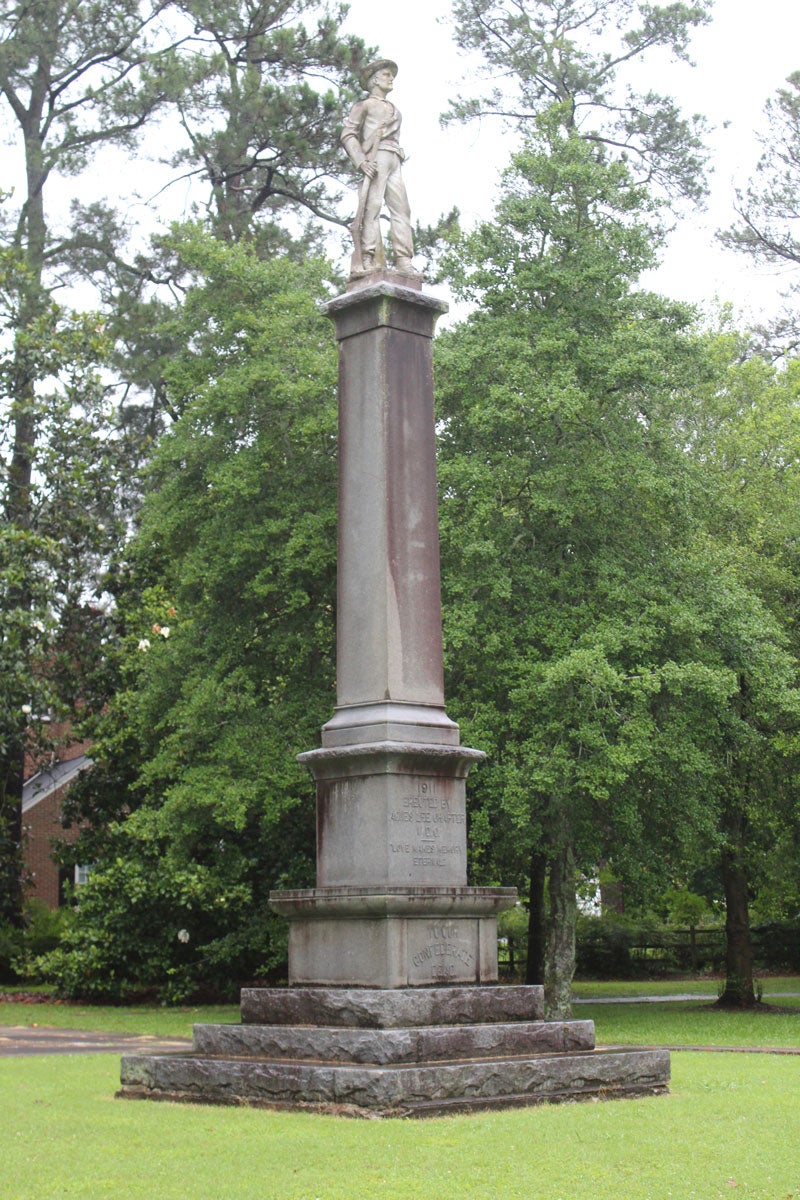Franklin caps bids to move monument at $60K
Published 8:37 pm Monday, March 22, 2021

- File photo
|
Getting your Trinity Audio player ready...
|
FRANKLIN
It’s been five months since Franklin’s City Council voted to relocate its Confederate monument, but the statue is still standing in the park between Clay Street and Meadow Lane where it’s been for more than 50 years.
The plan, per the council’s 6-1 Sept. 14, 2020 vote, had been to move it about half a mile away to Poplar Springs Cemetery. City staff had planned to demolish a gazebo in the cemetery and build a concrete pad in its place large enough to accommodate the monument.
After receiving — and rejecting — a bid of $95,000 from E.T. Gresham Company to move and re-erect the monument, the council voted 6-1 March 22 to set a maximum budget of $60,000 for the relocation and re-bid the project.
“I cannot guarantee you that we will receive a bid at the $60,000 mark; if it’s over that, the invitation for bid process would allow us to negotiate with the lowest bidder,” City Manager Amanda Jarratt said.
Jarratt didn’t give an estimate on when the monument might move to its new home. City staff has already demolished the gazebo, she said, but lacks the necessary equipment and expertise to move the monument and is holding off pouring the concrete pad until the council selects a contractor. Once the city receives new bids, staff will try to negotiate, then bring a final bid to City Council for approval.
Councilman Mark Kitchen, who had cast the one nay in the Sept. 14 vote to move the monument, also voted no on the $60,000 budget, objecting to spending “$1 of taxpayer money” on the matter.
Erected in 1911 by the Agnes Lee Chapter of the United Daughters of the Confederacy, the monument depicts a stone carving of the Confederate battle flag and bears the inscription “love makes memory eternal, to our Confederate dead.” It was originally located at the intersection of Second Avenue and High Street, and moved to its current location in Memorial Park in the 1940s after the Camp family donated the land to the city.
Nationwide, the presence of Confederate monuments in public parks, courthouse squares and other prominent locations has become a hot-button issue, particularly since May 25, 2020 — the date George Floyd, a Black man, died in police custody on a Minneapolis street corner after a white police officer, Derek Chauvin, pressed his knee against Floyd’s neck for more than eight minutes. Those who argue for the monuments’ removal say they’re symbols of racism that glorify defenders of slavery. Others say removing them is tantamount to erasing history.
Franklin’s public hearing on its statue’s fate, held Aug. 24, 2020, drew more than two dozen speakers, most in opposition to removal. Changes to state law, which took effect last July, require such a hearing before any locality can legally remove, relocate, cover or add signage contextualizing its monuments. The law further requires localities wishing to part with their monuments offer them for a period of 30 days to museums, battlefield organizations and other interested groups. But Franklin, desiring to keep its monument and relocate it to Poplar Springs Cemetery, never solicited such offers, nor has it received any unsolicited offers from groups wishing to take the monument, Jarratt said.





